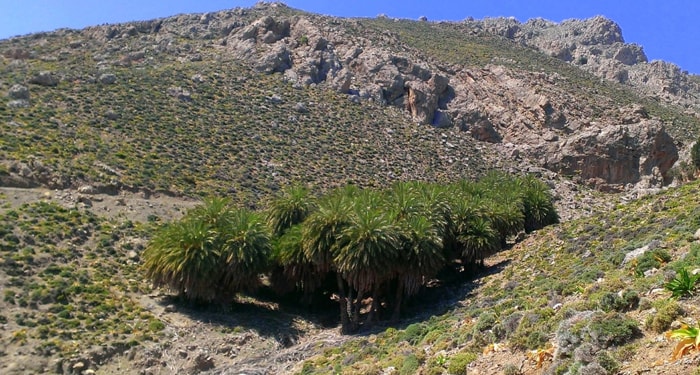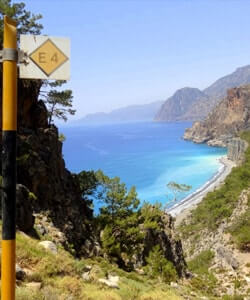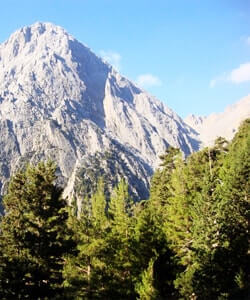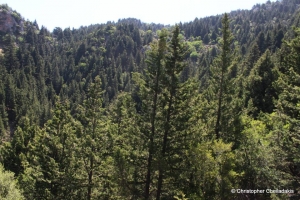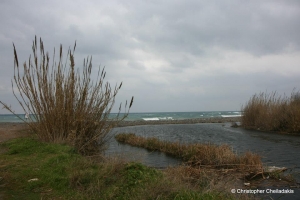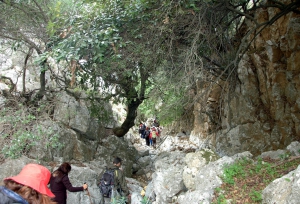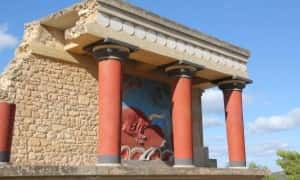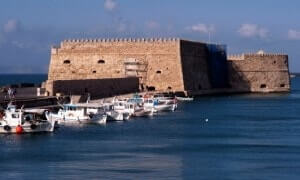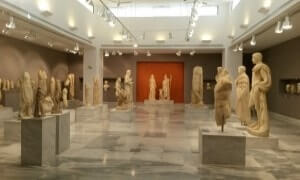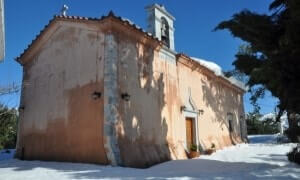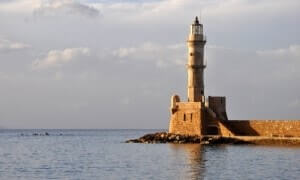Below this plane tree, that has been declared as nature monument, the 99 Holy Fathers settled after arriving to Crete from Egypt, Cyprus and Turkey. This is located inside the monastery if the 99 Holy Fathers. They say that its branches form 99 crosses.
The precipice Gourgouthakas is the deepest precipice of Greece and the second in the Balkans. Access is almost impossible by anyone and can only be achieved by experienced cavers. The second largest precipice of Greece is also in Crete and is known as Tafkoura. It is located on the site "Atzines" of the White Mountains (Chania) and east of the peak of the Holy Spirit in Melidoni area.
The very quiet beach of East Tsigounas, mostly known as Petrakis, is located 1km east of Lendas and 76km south of Heraklion. it is located on the foots of the steep and inhospitable slopes of Asterousia Mountains.
The holly or Kermes oak is a species that resembles common oak. In Crete it is met in all mountainous regions and is one of the most common trees. The oaks are met in ranges of Crete, as they can grow in rocky and dry soils and withstand the extreme weather conditions there. Indeed, the beautiful oak forest of Rouvas is the largest grove of oaks in Europe.
The area aroung the village Zourva by Chania hosts the most impressive wood of West Crete. The name of it is Paradisos (paradise) and stretches from Pises Gorge and Aliakes. The tree that dominates the area is the cypress tree, the most typical tree in the forests that cover the White Mountains. Through the forest of Paradise comes the old trail that climbs steeply from Zourva to springs of Tromarissa and continues up to the peaks of Madara.
The Gorge of Katsouna, near Vrysses, is believed to be the Xenia Street of Herodotus, according to who the guests of ancient Pergamos arrived through here in order to not have visual contact with the forts of the town. The length of the gorge is about one kilometer and starts from Vrysses to reach the entrance of the ancient city.
To the west of the prefecture of Chania and 20 kilometers away from the city of Chania we meet the estuary of Tavronitis. Tavronitis with Platanias are the two largest rivers in the western part of Chania. At its exit to the sea, the river forms a delta which is a very important wetland.
Kollita Gorges, i.e. Twin Ravines are located nearby the picturesque village Argyroupolis, about 22km southwest of Rethymnon city. They are named so, as they consist of two parallel canyons that end near Kato Poros settlement. Here we refer to the easternmost gorge of Moundros.





